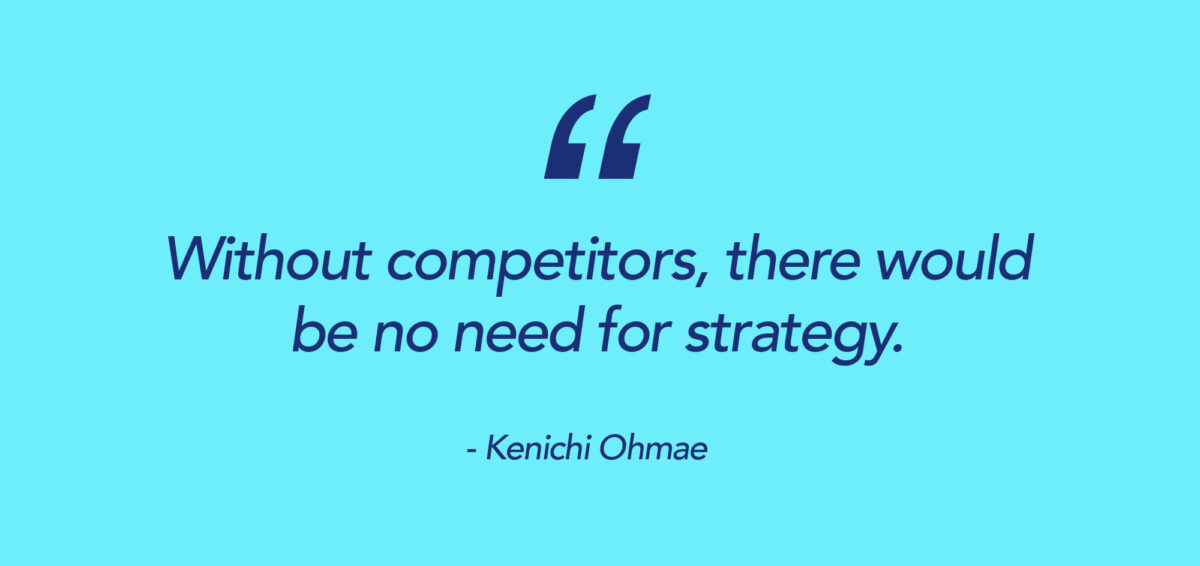Define your competitors
6 Steps For a Successful Brand In a Changing Economy | Part 2
For all your differences, there’s one big thing that you and your competitors have in common and that is your customer- if you need a reminder why the customer is king, here’s something we prepared earlier. In this mini-series, we’re here to provide insight into what makes a successful brand in a changing economy and today we’re diving headfirst into an age-old question; why do people buy from one company rather than another? Whilst it’s practically impossible to answer that definitively, understanding your competitors is the first step in winning your customers business and a slice of the market share.
Before we get stuck into it, let’s clear up one thing- having strong competitors is good for you. A bit of healthy competition incentivises learning, improvement, innovation and is a pretty decent cure for complacency. Don’t be intimidated or put off by seeing impressive businesses in your space, they make you better too.

At Brandwell, we approach competitor analysis like a reverse-engineered brand strategy- we trace back the decisions, motivations and strategy that’s informed the customer experience. So let’s get into it!
Do your research
Start by pulling together a list of similar businesses in your industry. The more similarities, the better but also consider including companies that have some key differences such as scale, location or price point. If growth is part of your business strategy (which it should be), be to sure to include aspirational competitors for long-term thinking. For the sake of the exercise, select 3-5 key competitors- any more than this and you risk getting lost in comparison, any less and the insights lack depth and rigour.
Get amongst it
Taking the perspective of the customer, immerse yourself in the competitor’s brand experience- jump online, click through every page on their website, scroll through their socials, look up the directors on LinkedIn- just make sure you put your profile to private first!
Break it down
To give the process structure, we use a SWOT analysis framework.

STRENGTHS: From a customer-centric lens, what part of the brand experience stands out as a drawcard. Do they have a swish website? Consistent and relevant social media? An engaging tone of voice in their content? Or maybe their checkout system gets you from ‘in your cart’ to ‘your delivery is scheduled for next Tuesday’ faster than you can say “my credit card won’t like this”. This isn’t about just copying their ideas, but learning what makes a great customer experience. pain
WEAKNESSES: The temptation to let it rip should be tempered with a dose of sportsmanship here- play hard but fair. And remember, it’s not about what you ‘like’ or ‘don’t like’, it’s about what works and what doesn’t for the customer. Here we’re looking for pain points in the brand experience such as a broken hyperlink, outdated imagery or maybe it’s poor product quality- anything that might negatively influence the customer experience.
OPPORTUNITIES: This part is an exercise of anticipation- what might their next move be? Perhaps it’s improving a weakness or building out one of their strengths, try and identify some areas for some ‘easy wins’ as well as the more strategic opportunities. For you, this might spark some ideas so you can beat them to it or better still, get ahead of the curve by looking longer-term.
THREATS: Last but not least, identifying the ‘threats’ is about anticipating some unforeseen consequences of their strategy- what could unravel their plans? Perhaps it’s price undercutting, product defects or all of the repercussions of COVID-19 wreaking havoc with supply chains.
Competitors are the obvious big ‘threat’ for any company. So if they’re in your list of competitors, are you in theirs? If the answer is no, let’s make it a yes. If your competitors don’t know about you, it’s likely their customers don’t either so your aim is to put yourself on the map and challenge them for a piece of the market share. That’s where the strategy comes in…
Trust the process
It’s important to remember that competitor analysis is a strategic exercise, not a weekly check-in. Keeping up to date with major trends or breakthroughs in the industry is important but if you’re constantly looking over your shoulder at other businesses, you’ll lose sight of your own. Build your competitor insights into your brand strategy, then stay focused on your long-term goals. In the words of Henry Ford “The competitor to be feared is one who never bothers about you at all, but goes on making his own business better all the time.”

Ok, so we may have added that last part ourselves but that’s beside the point. Amazon CEO, Jeff Bezos’ approach is to “keep our competitors focused on us, while we stay focused on the customer”. The ‘The Tree of Up’ is a great example of this mantra- it might seem foolish to give away their competitive edge by openly sharing their product development plan however the pay-off comes with what is undeniably an outstanding customer experience. The transparency of the roadmap is refreshing and demonstrates their commitment to building products that their customers love based on real customer data and input, not trade secrets or fancy technology.
If you need help with that, we’re just a phone call away.
Brandwell – Creative Branding Agency Melbourne
Stay tuned for the next instalment in our 6 part mini-series for building a successful brand in a changing economy.
Next up in the series we’ll be talking ‘customer perception’, i.e. what people say about you when you’re not in the room.
Keep an eye out for our tangible tips and tricks to help you build a successful brand in a changing economy.